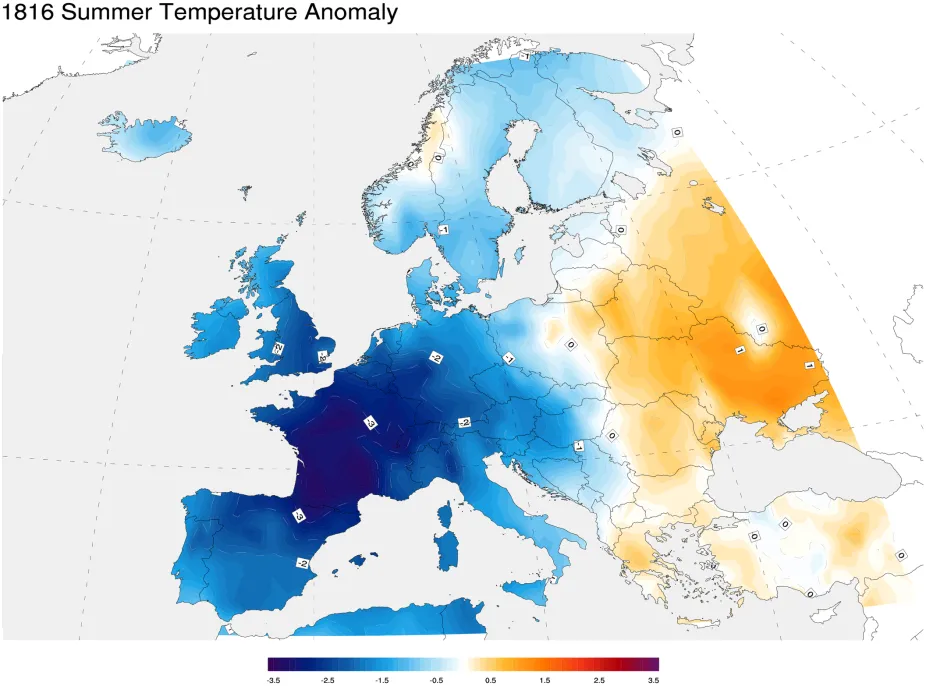Mount Tambora and the Year Without a Summer
The summer of 1816 was not like any summer people could remember. Snow fell in New England. Gloomy, cold rains fell throughout Europe. It was cold and stormy and dark - not at all like typical summer weather. Consequently, 1816 became known in Europe and North America as “The Year Without a Summer.”

Map of unusual cold temperatures in Europe during the summer of 1816. Temperature anomalies are in degrees Celsius (°C) with respect to 1971-2000 climate normals.
Creative Commons, authored by Giorgiogp2
Why was the summer of 1816 so different? Why was there so little warmth and sunshine in Europe and North America? The answer could be found on the other side of the planet - at Indonesia’s Mount Tambora.
On April 5, 1815, Mount Tambora, a volcano, started to rumble with activity. Over the following four months the volcano exploded - the largest volcanic explosion in recorded history. Many people close to the volcano lost their lives in the event. Mount Tambora ejected so much ash and aerosols into the atmosphere that the sky darkened and the Sun was blocked from view. The large particles spewed by the volcano fell to the ground nearby, covering towns with enough ash to collapse homes. There are reports that several feet of ash was floating on the ocean surface in the region. Ships had to plow through it to get from place to place.
But the smaller particles spewed by the volcano were light enough to spread through the atmosphere over the following months and had a worldwide effect on climate. They made their way into the stratosphere, where they could distribute around the world more easily. Earth’s average global temperature dropped three degrees Celsius. The effect was temporary. Eventually, even the smallest particles of ash and aerosols released by the volcano fell out of the atmosphere, letting in the sunshine.
The Year Without a Summer had many impacts in Europe and North America. Crops were killed - either by frost or a lack of sunshine. This caused food to be scarce, and caused farmers who were able to grow crops to fear that they would be robbed. The lack of successful crops that summer made the food which was grown more valuable, and the price of food climbed. Because the price of oats increased, it was more expensive for people to feed their horses. Horses were the main method of transportation, so with expensive oats, the cost of travel increased. This may have been one of the factors that inspired a German man named Karl Drais to invent a way to get around without a horse: the bicycle.
The gloomy summer weather also inspired writers. During that summer-less summer, Mary Shelley, her husband, the poet Percy Bysshe Shelley, and poet Lord Byron were on vacation at Lake Geneva. While trapped indoors for days by constant rain and gloomy skies, the writers described the bleak, dark environment of the time in their own ways. Mary Shelley wrote Frankenstein, a horror novel set in an often stormy environment. Lord Byron wrote the poem Darkness, which begins, “I had a dream, which was not all a dream. The bright sun was extinguish’d.”
© 2012 UCAR with portions adapted from Windows to the Universe (© 2008 NESTA)